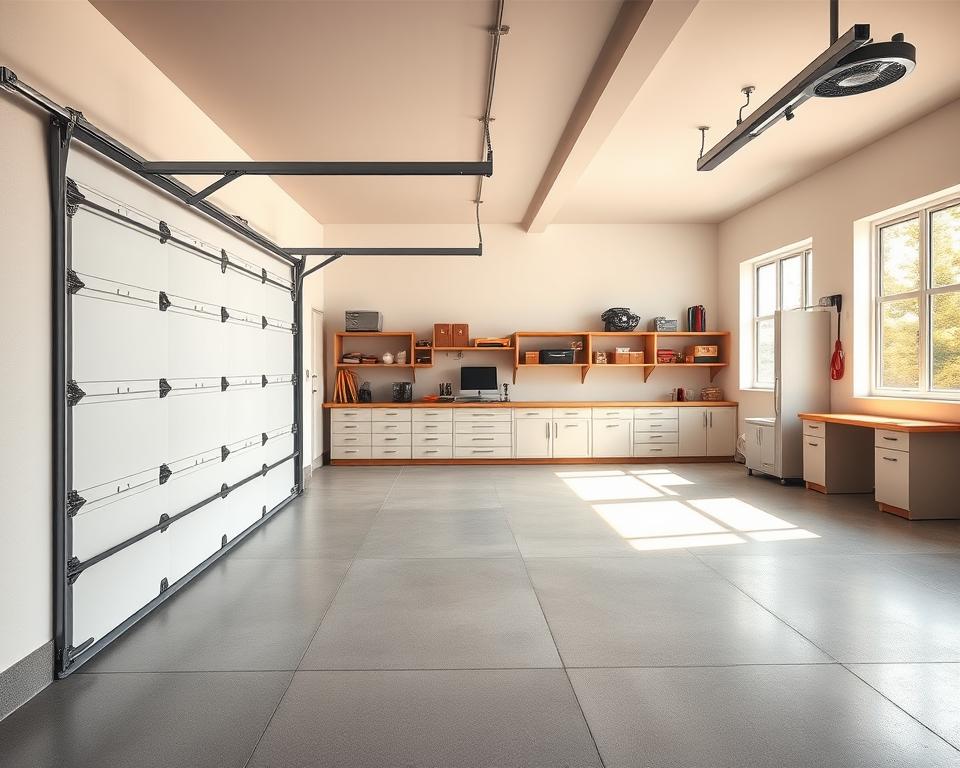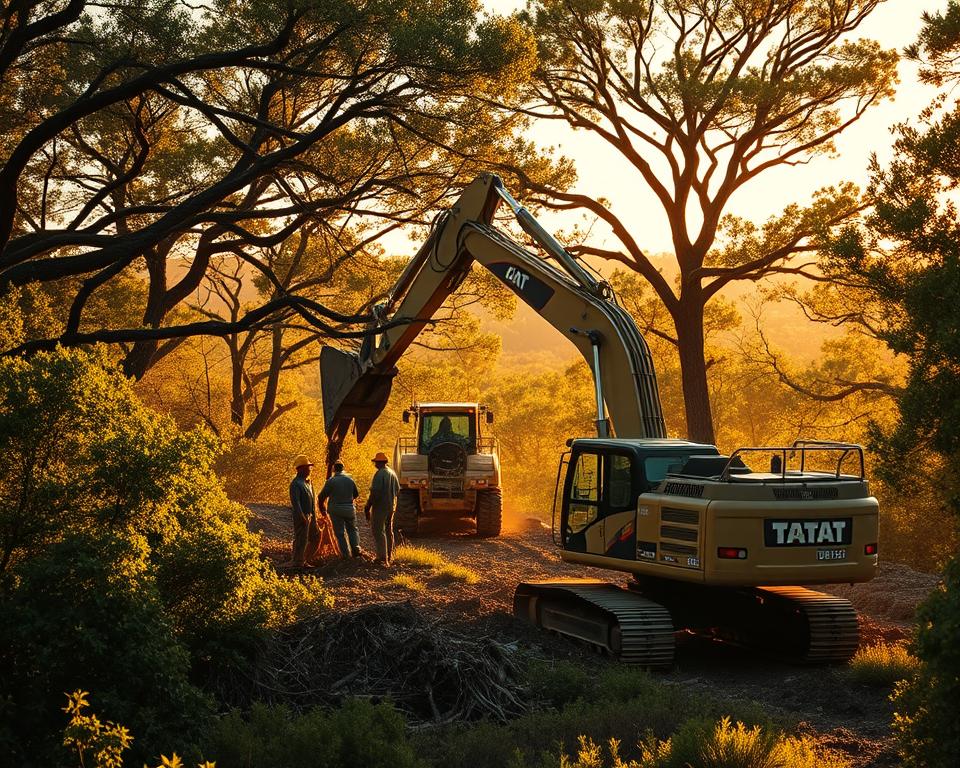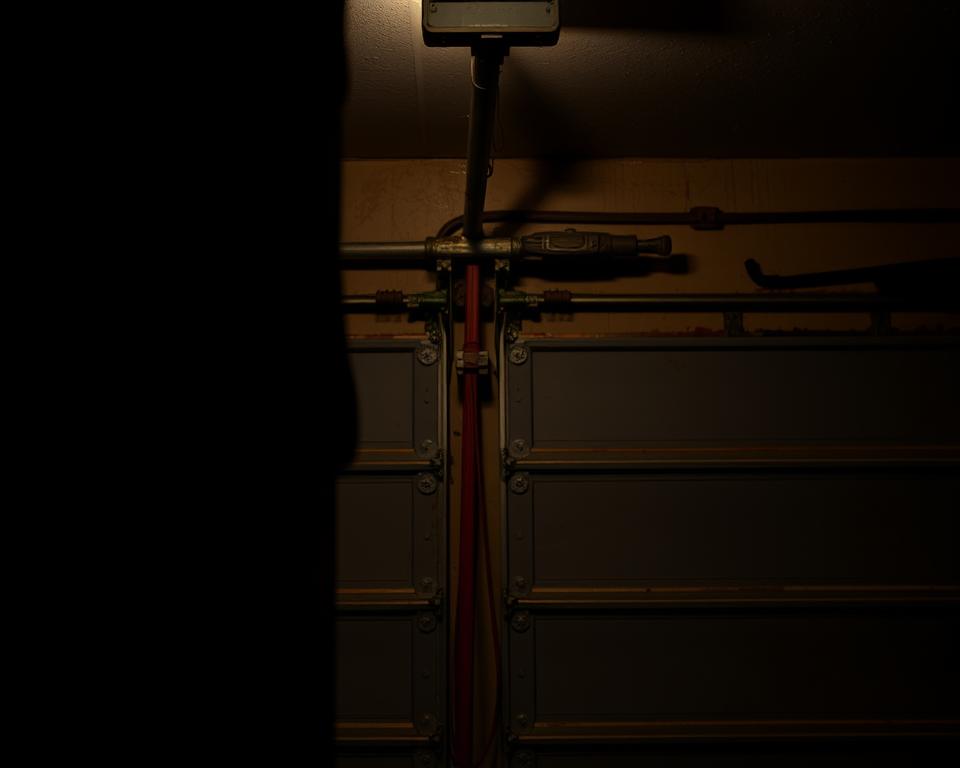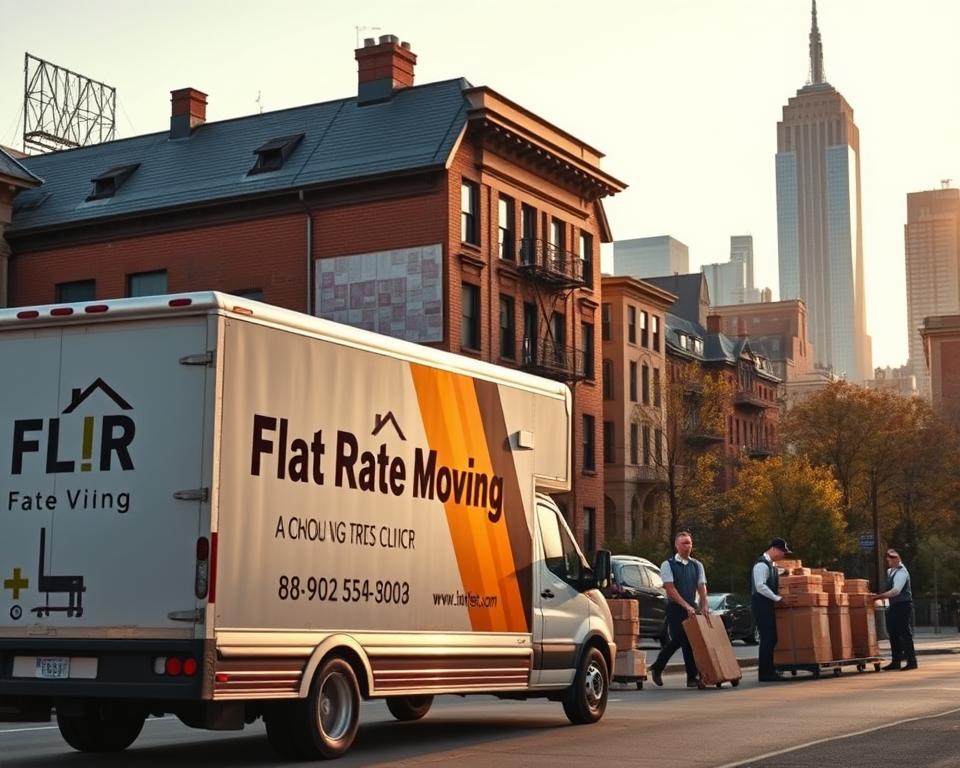Skilled Garage Door Opener Installation in San Clemente
Ever considered how a properly fitted opener could change your residence’s protection and ease? Within San Clemente, the role of expert garage door opener installation is vital. Coastline Garage Doors shines in offering premium garage door services, enhancing both performance and home safeguarding. With their expert touch, householders gain a reliable, trustworthy, and effective garage access method.
Accurate installation not only lengthens your door system’s life but also cuts down mechanical failure risks. This comfort stems from the fact your residence is well-protected with new garage door installation.
Grasping the Importance of Garage Door Openers
Opener systems are fundamental in modern houses, improving convenience and availability. They are particularly important during inclement weather. They let householders reach their garage without going outside, making it quieter and secure.
These openers also include key security measures. Self-operating reverse systems prevent incidents by detecting obstacles in the opening’s path. This demonstrates a firm commitment to door safety in San Clemente, making families are reassured daily.
Getting these set up by specialists is crucial to reaping their full benefits. A proper setup secures efficient performance and enhances security aspects. Homeowners should engage expert assistance to verify their openers function properly.
Reasons to Select Coastline Garage Doors for Installation Solutions
Coastline Garage Doors is dedicated to patron delight and excellent service in expert door services San Clemente. Their team of qualified technicians is highly skilled in various door systems. This ensures installations are done right, minimizing the likelihood of subsequent issues.
Within San Clemente, Coastline Garage Doors has earned a strong name among residents. They confirm garage door opener installations fulfill high industry standards. With warranties on their services in place, customers have confidence. They also provide continuing assistance, showing their commitment to customers past the setup.
Opener Setup in San Clemente
In San Clemente, the garage door opener installation process is thorough and accurate. It guarantees peak operation and security. Each step, from checking your garage door’s compatibility to the concluding modifications, is essential. This method guarantees dependable functioning, enhancing accessibility and safety for your house.
Step-by-Step Installation Process
Below is a detailed explanation at the opener setup procedure in San Clemente:
- Initial consultation to examine alternatives and requirements.
- Evaluation of garage door compatibility with the selected opener.
- Gathering necessary equipment, including a rotary tool, ladder, and wiring connectors.
- Installing the bracket and securing the opener’s drive mechanism.
- Connecting the opener to the power source and linking it to the garage door.
- Testing the system for correct operation and protective measures.
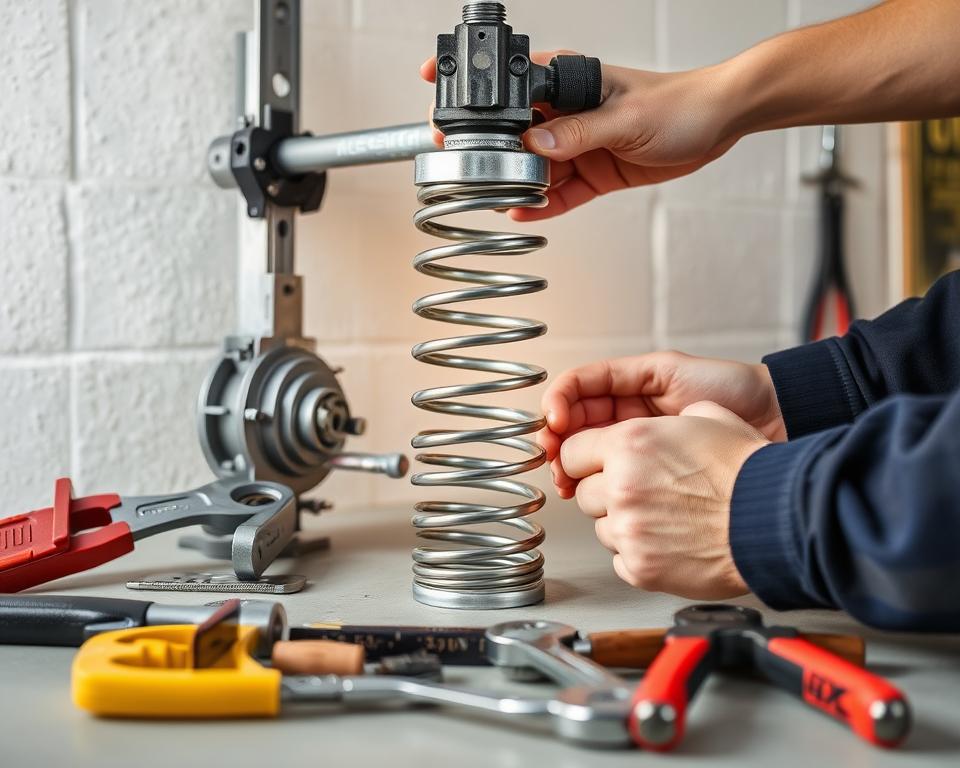
Expected Time Frame for Installation
The installation time in San Clemente differs from two to four hours. This is based on the system’s complexity and any required modifications. Skilled professionals pursue precise workmanship. They endeavor to provide a dependable system that fulfills safety standards and is simple to operate.
Selecting the Ideal Opener Brand
Choosing a dependable opener brand is key to your system’s performance and durability. Within San Clemente, Chamberlain, LiftMaster, and Genie are premier options. Each option delivers special attributes to satisfy diverse demands. It’s important to explore what these brands have to offer.
Popular Brands Available in San Clemente
- Chamberlain: Renowned for its innovative smart technology, Chamberlain offers versions integrated with mobile applications. This enables users to operate their garage doors wirelessly.
- LiftMaster: This manufacturer is esteemed for its tough build and a spectrum of drive systems. It’s perfect for both diverse settings.
- Genie: Genie delivers adaptive systems with various drive configurations. This ensures options for all homeowners.
Comparing Different Models and Features
In comparing garage door opener models, review a variety of critical points:
| Manufacturer | Drive Type | Smart Technology | Weight Limit |
|---|---|---|---|
| Chamberlain | Belt System | Yes | Approximately 1,500 lbs |
| LiftMaster | Chain Drive | Optional | Up to 3,600 lbs |
| Genie | Screw System | Yes | Up to 3,000 lbs |
Comprehending these variations enables informed choices. The right model offers both security and ease for householders.
Pricing Considerations for Opener Setup
Grasping the cost factors for opener setups is vital for clients in San Clemente. Multiple factors influence the entire expense, impacting both financial plans and project timeline. Costs depend on the brand, model, and complexity of the installation. Reviewing these factors is important for these considerations for a trouble-free process.
Average Pricing in San Clemente
The expense for garage door opener installation in San Clemente is usually between $300 – $700. This spectrum reflects differences in brands, models, and specific installation needs. Basic options begin at $300, while advanced models can go beyond $700, often with advanced features like smart technology or battery backup systems.
Understanding Labor and Material Costs
Labor and material costs are significant in the complete expense. Labor can constitute half to nearly three-quarters of the complete cost, subject to the local pricing structure and supplementary labor. Common labor costs in San Clemente range from $50 to $100 each hour. It’s crucial for clients to get detailed quotes from professionals.
| Cost Component | Estimated Cost Range |
|---|---|
| Garage Door Opener (Basic Model) | \$300 – \$500 |
| Advanced Opener | \$600 – \$700 |
| Hourly Labor Rate | 50 to 100 dollars per hour |
| Extra Electrical Expenses | 100 to 300 dollars |
Benefits of Professional Garage Door Services
Choosing professional door services in San Clemente provides residents improved efficiency and safety. Certified technicians have the capability to install and upkeep doors accurately. This reduces the risk of subsequent issues. Professional installations typically result in fewer repairs, reducing time and money.
Regular door upkeep in San Clemente is key to minimizing costly fixes. Periodic evaluations and modifications identify incipient faults before they become major problems. This proactive approach secures your garage door functions efficiently for extended durations, delivering hassle-free use.
Door Repair and Upkeep Solutions
Ongoing garage door repair San Clemente and servicing are key to maintaining your garage door system running smoothly. Coastline Garage Doors offers expert services like comprehensive evaluations, tune-ups, and rapid responses. This detects problems early preventing them from becoming major issues that disrupt your day.
Components like [unspun], cables, and systems demand periodic evaluations to maintain safety. Neglecting maintenance can lead to deterioration, impacting performance and protection. Our regular garage door maintenance San Clemente includes lubricating parts, verifying protective measures, and tweaking operational balance.
Letting experts manage these duties extends your door’s longevity and gives you peace of mind. Consistent evaluations often mean only modest tweaks are required. This helps avoid more expensive repairs later on.
Importance of Garage Door Safety Features
Modern garage door safety features are indispensable for securing both individuals and property. Contemporary setups in San Clemente utilize various protective technologies to avert mishaps and increase efficiency. It’s imperative for clients to grasp these innovations to ensure their doors operate safely and efficiently.
Types of Safety Innovations and Technologies
Several critical safety features have been designed to lessen risks inherent in door operation. These consist of:
- Photoelectric Sensors: Sensors sense objects in the opening’s course, ceasing motion if an impediment is identified. This system markedly lowers the risk of injury or damage.
- Emergency Release Mechanisms: This system permits manual operation of the garage door in crisis situations, providing a quick escape route when needed.
- Smart Technologies: Many garage doors now combine with mobile applications, alerting users to any problems. These notifications can avert mishaps by ensuring doors are in proper working order.
- Rolling Code Technology: This advancement rotates the entry code each time the door is operated, thwarting unauthorized access and improving safety.
Grasping these protective measures in San Clemente empowers homeowners to make informed choices about their door management. Adopting the latest safety technologies for doors secures security and protection for families and properties alike.
Remote Programming for Doors in San Clemente
In San Clemente, garage door remote programming is essential for convenience and safety. Coastline Garage Doors’ specialists make setting up remotes easy for clients. They handle each remote’s unique steps, ensuring get easy access to their homes.
When issues occur with remote controls, prompt problem-solving is key. The experts rapidly diagnose and resolve problems, confirming the garage door works right. Protection is of utmost importance, as a properly configured remote keeps the garage secure. Clients in San Clemente are reassured knowing their remotes are configured correctly.
Garage Door Replacement Options and Considerations
Replacing an outdated or faulty garage door is often a required measure for residents in San Clemente. A fresh garage door can improve curb appeal, improve energy efficiency, and elevate protection. Various options are available, and it’s critical to explore these thoroughly before choosing one.
When contemplating garage door replacement, several factors should be reviewed:
- Material: Choices consist of steel, wood, fiberglass, and aluminum, each with unique advantages in durability, upkeep, and appearance.
- Style: Doors come in diverse appearances, from traditional raised panel to contemporary minimalist. The look selected should match the home’s exterior design.
- Insulation: Effective insulation not only improves thermal performance but also contributes to a more temperature-stable environment.
These factors for door replacement greatly impact both the performance and look of your residence. Clients in San Clemente can rely on the specialist knowledge of Coastline Garage Doors, who provide tailored advice based on unique demands and styles.
Ultimately, selecting the ideal alternatives for door replacement can lead to enduring value and enhanced home worth.
Final Thoughts
The significance of professional opener setup in San Clemente is substantial. Providers such as Coastline Garage Doors offer systems that are not just functional but also improve residence safety. Selecting the proper model, manufacturer, and protective options is key to securing your property.
Specialist solutions make the installation process smoother, reducing the possibility of complications. By selecting Coastline Garage Doors, residents in San Clemente enjoy superior performance, protection, and innovative solutions. This commitment enhances their home’s value.
Grasping the full scope, from installation to upkeep empowers clients to achieve the best performance from their setup. With the correct advice and professional care, a safe, efficient door system is within reach.





